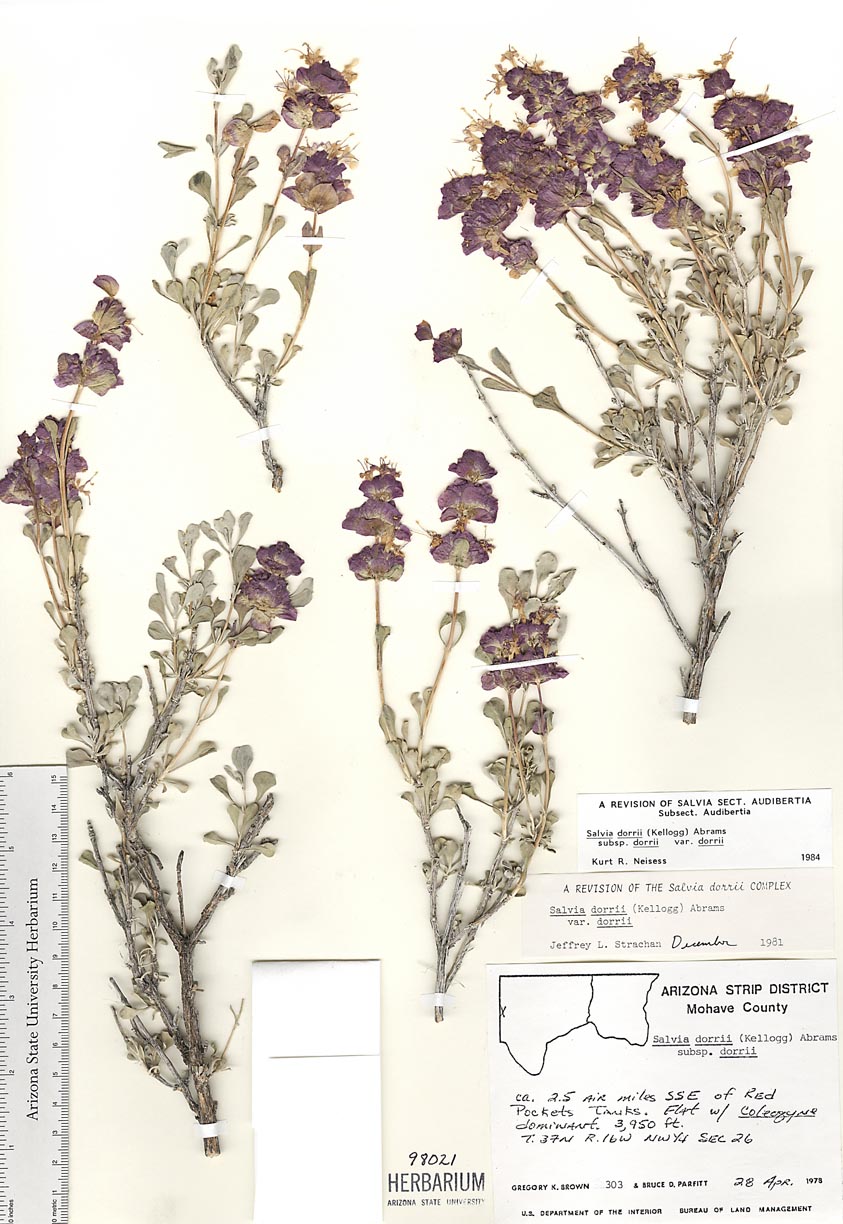Lamiaceae
|
Lamiaceae |
|
|
PLANT: Annual, biennial and perennial herbs or shrubs (rarely small trees), often variously pubescent, mostly aromatic; stems mostly 4 angled. LEAVES: opposite (rarely alternate or whorled), simple (rarely pinnately compound), mostly toothed to lobed, exstipulate. INFLORESCENCE: cymose, or less often racemose to paniculate, the cymes often congested as axillary verticils, these sometimes forming spikes or interrupted spikes, the internodes then clearly visible. FLOWERS: mostly perfect; sepals 5, connate, the calyx appearing 2 5 lobed or toothed, actinomorphic to zygomorphic, mostly persistent; petals 5, connate, the corolla (4 )5 lobed, mostly strongly zygomorphic, often bilabiate; stamens epipetalous, 2 (2 staminodes sometimes also present) or 4 (then of two lengths); pistil 1; carpels 2; ovary superior, sessile to stalked, deeply 4 lobed, each lobe with 1 ovule; style 1, the stigma usually 2 lobed. FRUIT: of 4 1 seeded nutlets. NOTES: Ca. 200 genera, ca. 3500 spp., cosmopolitan; frequented by many pollinators, especially bees. Volatile oils are produced by most species. Many are cultivated as culinary herbs, including Mentha (mints), Lavandula (lavender), Salvia (sage), Thymus (thyme), Ocimum (basil), Origanum (oregano), and Rosmarinus (rosemary). Others are cultivated for ornament (Solenostemon, Monarda, Salvia) and the alkaloids of a few have known psychoactive or medicinal properties. As traditionally defined, a group that is mostly easy to recognize, but considered polyphyletic by Cantino (1992) Ann. Missouri Bot. Gard. 79:361 379. |
|
